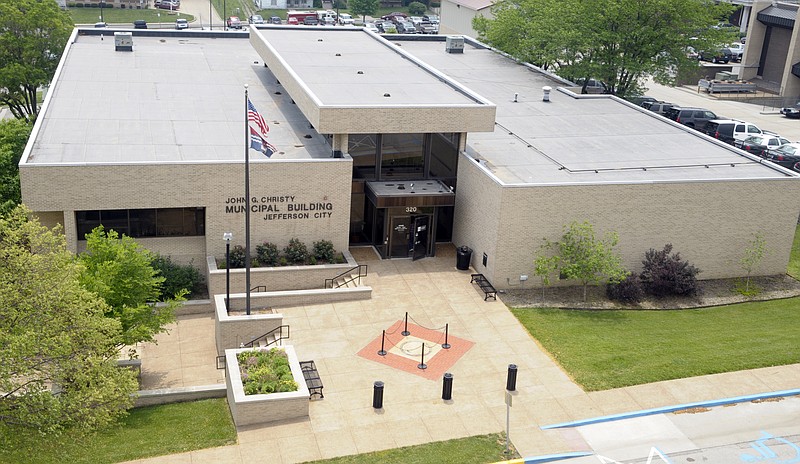With extra funding coming down the line, Jefferson City needs to look at the community as a whole.
That was the message Thursday from the second Community Needs Assessment meeting.
The Community Needs Assessment is part of the city's application for Community Development Block Grant COVID-19 relief funding (CDBG-CV) from the state. The city plans to request $2 million, which is the maximum it can ask for.
This funding will go toward aspects of city life affected by COVID-19, but the city also has other funding sources coming down the pipeline that could go to other needs.
The project areas for this pool of money would be infrastructure, community facilities, public service, economic development, planning and demolition.
While the city can use some of the money for projects, some of it will also be subgranted out to community organizations for projects.
The first meeting, along with a community survey, primarily saw support for the funding to go toward low-income and transitional housing. This included homeless shelters and new homes.
While people brought housing up Thursday evening, it wasn't the primary focus people discussed.
John Blosser, with Transitional Housing, discussed the organization's goal of renovating homes so new residents can come in.
The organization is currently renovating a home on Cherry Street and has another project lined up, but is seeking funding to continue the efforts.
"We're looking for other properties," he said. "We're volunteers. We don't have any paid staff and we rely on charitable donations to do our work. This will be the first grant we've applied for."
However, the two other speakers at Thursday's meeting encouraged the city to focus on economic development while getting the entire community what it needs.
Tyree Byndom, CEO of Urban UniverCity - a Black-owned technology and startup company out of Columbia, pointed out that the city's survey results cited workforce development and entrepreneurship as poor or fair in Jefferson City.
These are the areas that promote recovery, he said, because they're areas where investing money can make money.
"It's not a waste to really help people recover, actually get the soft skills, learn how to do emerging technology so they know how to get into social media, into web development, into different types of skill sets," he said.
The Historic Foot District, Byndom said, is an example of an issue cities around the country face at the moment, which is how to address the historic removal of Black community hubs.
"No one has really figured out how to recover from this," Byndom said.
He also emphasized the importance of a plan, based in research, to address issues within the community.
"We look at all the cities to measure the solutions that are effective and that have been proven to work," he said. "When you try to start something, you're not just starting something as a pilot and you don't know if it's going to work or not. With these funds coming, especially with the $350 billion that's coming from the American Rescue Plan, many in the community sees it as their last shot and last opportunity to actually recover."
Adrian Hendricks, founder of the Center for Change and Community Life, said he appreciates the opportunity to have this conversation.
The goal, Hendricks said, is to look at Jefferson City as a "holistic community."
One of the big questions, he said, is "how do we put our resources in a space that will give young people the opportunities so they can have sustainability and they can thrive?
"Someone has to have a conversation about the social and the cultural infrastructure of our city," Hendricks said.
Some of the standing issues, he said, are economic development, job training and workforce development.
Hendricks said one thing that needs attention is the development of a small business incubator.
When the community as a whole won't address an issue, Hendricks - who is also pastor at the Joshua House Church - said, religious congregations like his need to step in with what limited funds they have.
"That is possibly a flaw in how we are looking at community and there may be some reason to give, a concept or put together the type of infrastructure that will allow this kind of support to be made," he said. "The other side of this conversation, I think is important, is that there's always going to be a demographic that's going to have an opinion most of the time those demographics are going to represent moderately educated and financially stable people for the most part."
Those people tend to have internet access, he said, and are able to take surveys the city or state put out.
"We have to understand there's a population of people that will not be represented in that data," Hendricks said. "We, who are looking at that data, have to make some decisions about who are not being voiced, who are not being heard."
The issue, he said, is there are groups like Center for Change and Community Life or Building Community Bridges that have plans and goals, but ultimately lack the space to execute those plans.
"I think that's a good place for us to start to look at how we do these types of things, how do we cultivate resources that make it to the people that have needs," he said. "How do we engage those bodies of people that are not typically engaged? I have a couple of things that I think are critical. I think they are necessary. The entrepreneurship and small business development incubator need to be done, having a place for young people to be in some case the directors of the future, having these types of youth advisory councils."

